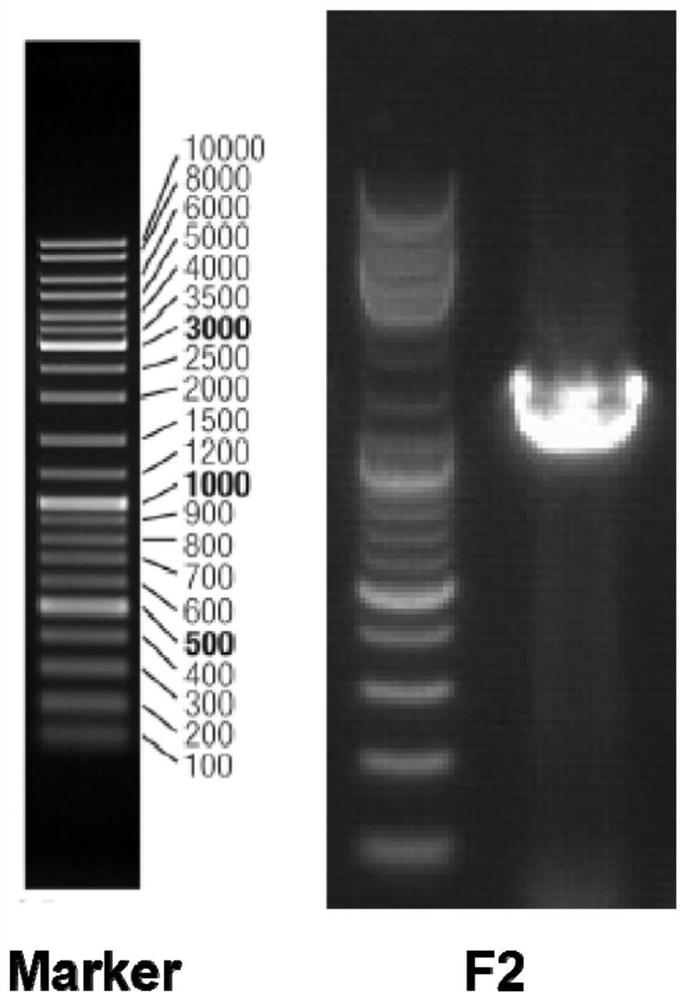A Salt-tolerant Denitrifying Bacteria and Its Application
A denitrifying bacteria and salt-tolerant technology, applied in the field of environmental microorganisms, can solve problems such as the inability to remove nitrite nitrogen
- Summary
- Abstract
- Description
- Claims
- Application Information
AI Technical Summary
Problems solved by technology
Method used
Image
Examples
specific Embodiment approach 1
[0025] Specific embodiment 1: In this embodiment, a salt-tolerant denitrifying bacterium, which is Alishewanella sp.F2, is preserved in the General Microbiology Center of China Microbiological Culture Collection Management Committee, and the preservation address is Chaoyang, Beijing No. 3, No. 1 Yard, Beichen West Road, District. The preservation date was March 25, 2019, in the General Microbiology Center of the China Microbiological Culture Collection Management Committee, and the number is CGMCC No: 17433.
[0026] The Alishewanella sp.F2 colony in this embodiment is white and round, with a diameter of 1-2 mm, neat edges, smooth surface, sticky and shiny. Observed under a microscope, the bacteria are rod-shaped, with a length of 1-2 μm and a width of 0.3-0.5 μm.
[0027] The physiological and biochemical characteristics of Alishewanella sp.F2 in this embodiment are as shown in Table 1:
[0028] Table 1 Physiological and biochemical characteristics of Alishewanella sp.F2
...
specific Embodiment approach 2
[0031] Specific embodiment two: the screening method of Alishewanella sp.F2 in this embodiment is realized according to the following steps:
[0032] Step 1: Take 2mL of muddy water samples collected from the seawall of Zhuanghe City, Dalian City, Liaoning Province (39°38′31″N latitude 122°58′19″East longitude) and put it into a 250mL conical flask, add 200mL strains for denitrification culture The bottle mouth is sealed with a sealing film to create an anoxic environment; the enriched culture solution is obtained after standing at a constant temperature for 5 to 7 days at a temperature of 30°C;
[0033]Step 2: Gradiently dilute the enriched culture solution in Step 1 using the doubling dilution method, pipette 0.5mL of each dilution suspension into the strain screening plate culture medium (which has been placed overnight, no bacteria growth), and coat with a glass triangle. After spreading the enriched culture solution evenly with a cloth stick, pour the second layer of ster...
specific Embodiment approach 3
[0052] Specific embodiment three: In this embodiment, the determination of the salt tolerance of Alishewanella sp.F2 is as follows:
[0053] Prepare screening and separation media with different salinity gradients, that is, the NaCl concentrations are 0g / L, 30g / L, 50g / L, 70g / L, and 100g / L; inoculate strain F2 onto the medium plates of various salinities Put it into a constant temperature incubator at 30°C and cultivate it for 5 days. Whether the strain grows is used as the basis for whether the strain can withstand the corresponding salinity; the culture medium not inoculated with denitrifying bacteria is used as the blank control, and each group has 3 parallels.
[0054] After 1 day of culture, no colonies appeared in the medium of each salinity; after 2 days of culture, there were obvious colonies on the medium containing 0g / L and 30g / L NaCl, containing 50g / L, 70g / L and 100g / L There was a small amount of colony growth on the medium containing L NaCl; after 5 days of cultivat...
PUM
 Login to View More
Login to View More Abstract
Description
Claims
Application Information
 Login to View More
Login to View More - R&D
- Intellectual Property
- Life Sciences
- Materials
- Tech Scout
- Unparalleled Data Quality
- Higher Quality Content
- 60% Fewer Hallucinations
Browse by: Latest US Patents, China's latest patents, Technical Efficacy Thesaurus, Application Domain, Technology Topic, Popular Technical Reports.
© 2025 PatSnap. All rights reserved.Legal|Privacy policy|Modern Slavery Act Transparency Statement|Sitemap|About US| Contact US: help@patsnap.com



